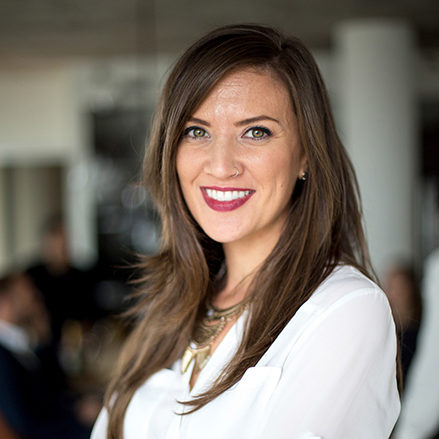The following is a reflection by Angela and the Realized Worth team on hiring for diversity. We invite you, our readers, to reflect with us – and we invite you to analyze, criticize, and offer feedback. As we work together to dismantle systems of oppression in corporate American and beyond, we are becoming increasingly aware of our need for “the village” to guide and teach us. Would you be willing to share your experiences and insights? Please comment below or send a note to contact@realizedworth.com. We want to thank staff writer, Lauren Znachko, for her invaluable assistance helping us articulate this complex set of thoughts, opinions, and values.
Aligning Practices with Values
Realized Worth exists to create a more inclusive society by breaking down barriers between people and engendering empathy and compassion in and outside of the workplace. We do this by implementing the Transformative Approach to corporate volunteering that we’ve spent the last 13 years developing with hundreds of companies around the world. But what about our own house? Is it inclusive? Are we breaking down barriers inside the doors of Realized Worth? Like many other companies in 2020, we have increased our internal scrutiny regarding the diversity of our staff and the equity of our hiring processes. As we invite new people to join our team at all levels this year, we are asking, “What practices need to be in place now in order to be the company we want to be 5 years from now?”
The complex issue of intentionally hiring for diversity came to a head during our recent search for a senior member of our consulting team. While we are woman-owned, we are a majority-white company with a relatively limited range of lived experience. We bring subject matter experts into our client work to inform certain topics and strategies, but we’re aware that our lack of consistent diversity in the make-up of our staff leaves us lacking in terms of the impact we can have through our work. We are also aware that as a “belief” company – a company driven by our beliefs in the potential and inherent value of humanity – we have a responsibility to circumvent the system and find and hire people to whom privilege is historically less accessible. So, with each new hire, we prioritize adding to the diversity of our company at every level.
And with each new hire, we learn a lot.
In this most recent search, it was brought to our attention that we did not explicitly state our intention to hire for diversity in our job posting. This feedback gave me pause. If we are prioritizing diversity in our hiring practices, why don’t we just come out and say that only BIPOC (Black, Indigenous, and People of Color) need apply?
As I reflected on that question, I realized that to list non-white, or non-cisgender identities as a qualification for applying simply would not be accurate. No one’s inherited biology is ever a pre-condition for an application, hiring or firing in our company, nor should it be anywhere else. The trouble of course is that job postings are bullet points that are meant to be concise and frankly, vague. The vagueness serves to hold space for the myriad skills, experience, histories, personalities, and personal goals that each individual brings to the table when considering a candidate.
The truth is that even as we prioritize hiring for “diversity,” that diversity is not meant to be centered on skin tone. Yet, the reality is that the world we live in has categorized people by their skin tone; therefore, people of different skin tones tend to have different lived experiences and people with a shared skin tone tend to have shared lived experiences.
Hiring for the Future We Want to See
In our experience, hiring BIPOC is a matter of structurally changing the identity of our company. There is a fundamental business asset in having diverse origins, education, experience, personalities, physical abilities, lifestyles, and skills. As a company that is deeply defined by the people who run it and that values a culture of diversity and inclusion, our focus right now is in increasing representation on our team and in our leadership. Our future as a business relies on the representation of varied perspectives on our team and it relies on the authentic alignment of our practices with the values we espouse.
Anti-racism, social justice, reparations, representation, and the amplification of BIPOC and BIPOC-led organizations are at the forefront of our vision. It is possible and even likely that our next hire will identify as BIPOC. We might hire someone with experience in community organizing or anti-racism training and education in addition to all of the other qualifications for the position. What I mean is that, to put it simply, hiring for diversity can mean a lot of things that cannot be summed up in a bullet point and certainly not in a skin color.
It Takes a Village
We took time to discuss this as a team and a few important questions and issues were raised. We agreed, “Let’s ask the village.” How do you approach hiring for diversity at your company? Have you considered the following? Got any advice? We’ll take (and share) it all!
- What words and phrases are we including in our job postings to make it clear that diverse perspectives are genuinely what we seek – as opposed to assimilation? (For example, rather than advertising for someone who is a culture “fit”, we should advertise for someone who can be a culture “add.”)
- Where are we sourcing candidates? Are we using platforms populated by people who look, think, and act like us? Or are we doing the work to identify platforms populated by people with a broader range of lived experience?
- Have we set diversity, equity, inclusion, and belonging KPIs and objectives? Do we measure against them?
- Are we reducing bias in our candidate screening process? At what steps of the process do we utilize blind hiring? Are we tracking the results/is it working?
- Have we included minority employees in our recruitment, screening, and interviewing?
We recognize that these are not a comprehensive representation of all the right questions to ask, so we invite you to expand the list and offer additional perspectives and resources. Please feel free to comment below and/or email us at contact@realizedworth.com. We’re grateful for you as you help us further our mission to create a more inclusive society by breaking down barriers between people and engendering empathy and compassion in and outside of the workplace.
Notes and resources:
BIPOC is an acronym for Black, Indigenous, and People of Color. It is used here to include, but is not limited to Hispanic, Latinx, Asian and Pacific Islander, Arab, and other non-white racial identities. We include LGBTQ+ people as well in terms of diverse hiring. Identities are intersecting, layered and nuanced and there is no way to talk about one aspect of identity without also acknowledging the complexities that we each represent.
If you would like to know more about the theory of intersectionality, I suggest beginning with Kimberle Crenshaw’s essay, Demarginalizing the Intersection of Race and Sex: A Black Feminist Critique of Antidiscrimination Doctrine, Feminist Theory and Antiracist Politics (University of Chicago Legal Forum: Vol. 1989: Iss. 1, Article 8).
If you’re just getting started on your journey of diversity hiring, we recommend this guide. It was an incredibly helpful resource for us!: The Ultimate Guide to Diversity Hiring
For ongoing study and further resources, I recommend following Rachel Cargle (@RachelCargle), and supporting her work on patreon, which includes extensive resources for all people looking to become more informed, educated, powerful and compassionate in this work for racial justice.






